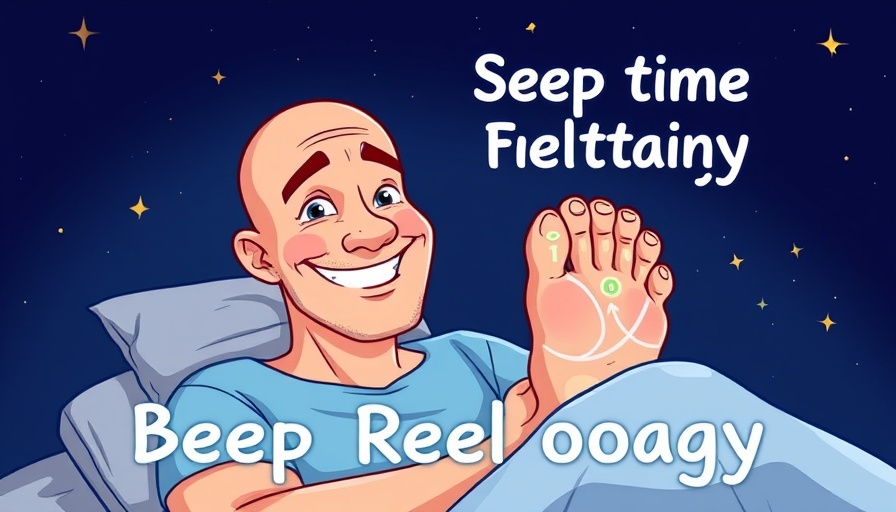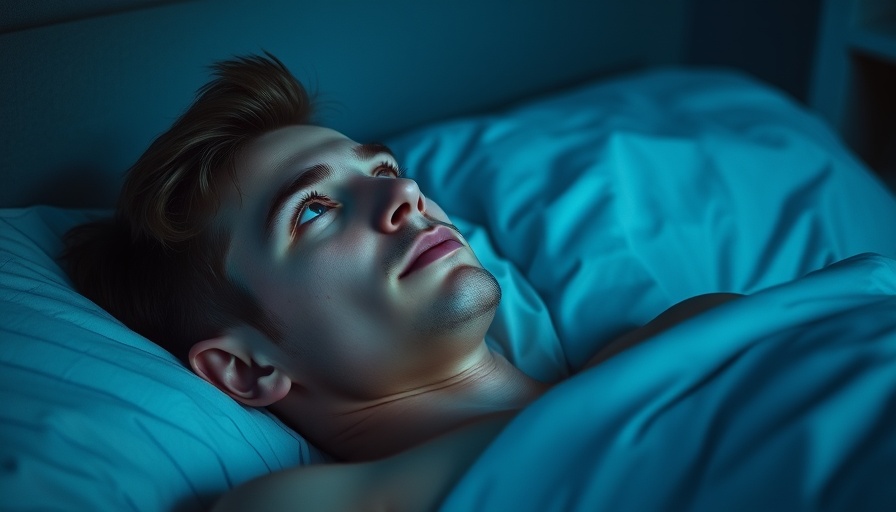
Why Walking is Essential for Better Sleep
Many people experience sleepless nights, tossing and turning while feeling overwhelmed by anxiety and stress. If you find yourself in this situation, you might be surprised to learn that one simple solution lies in your own home: walking. This natural, low-impact exercise can facilitate better sleep and enhance your overall well-being.
In 3 Ways Walking Can Help You Sleep Better!, the discussion dives into the transformative power of physical activity on sleep quality, exploring key insights that sparked deeper analysis on our end.
Understanding the Science: Cortisol and Endorphins
The relationship between physical activity and sleep quality is not merely anecdotal; it's backed by neuroscience. When you engage in walking or any form of physical exercise, your body begins to lower cortisol levels. Cortisol is a hormone often linked to stress and anxiety. Elevated cortisol levels can leave us feeling jittery and restless, making it difficult to drift into peaceful slumber.
Moreover, exercise increases endorphins, the body's natural feel-good hormones. These chemicals stimulate feelings of pleasure and relaxation, creating the perfect environment for sleep. When you feel good physically and mentally, you're more likely to experience restful, uninterrupted sleep.
Boosting Melatonin for Enhanced Sleep
Another critical aspect to consider is melatonin, the hormone responsible for regulating sleep-wake cycles. Engaging in physical activity like walking helps to enhance the secretion of melatonin from the pineal gland. Increased melatonin levels signal your body that it's time to wind down, preparing you for a restful night. This mechanism illustrates why incorporating more movement into your daily routine can significantly enhance sleep quality.
Practical Benefits of Walking for Sleep
Think of walking not just as exercise, but as a self-improvement tool that can transform your nights into peaceful retreats. With so many health benefits, from improved mental health to better heart health and blood circulation, making walking a part of your daily routine could be the key to a more balanced life.
Incorporating even short bouts of walking throughout your day can create a ripple effect, promoting better health and wellness. It can be as simple as taking a stroll around your office during breaks or walking to nearby locations instead of driving.
Embracing Exercise in Your Life: Overcoming Barriers
While the benefits are abundant, breaking the cycle of inactivity can be challenging. Many professionals lead busy lives, often prioritizing work over their health. It's essential to remember that small changes can yield significant results. Prioritize walking by setting a daily step goal, and consider using a fitness tracker to encourage movement even in the busiest schedules.
Another barrier is the feeling of fatigue, but often, exercise like walking can reduce fatigue instead of increasing it. Understanding that movement leads to energy can empower you to act differently.
Taking Action: Step Towards Better Sleep
The time for action is now. If you're eager to improve your sleep and overall health, consider adding walking into your lifestyle. Start small—aim for 10-minute walks after meals or short walks during breaks at work. Gradually increase the duration and intensity as you feel comfortable.
Moreover, combining walking with mindfulness practices can further enhance the positive effects on your mental health. By paying attention to your surroundings and being present in each step, you not only improve your cardiovascular health but also foster emotional wellness.
Conclusion: Transform Your Nights With Small Steps
In conclusion, if you’re struggling with sleep, walking is a simple yet powerful tool to consider. Through lowering cortisol, boosting endorphins, and increasing melatonin, it puts your body in the right state to welcome sleep. Remember that every little step counts, and taking charge of your physical activity can lead to massive improvements in the quality of your life. So, put on those walking shoes and take that first step towards better sleep today!
Are you ready to embrace walking as a path to better sleep? Start today and witness the transformation in your nights and overall well-being!
 Add Row
Add Row  Add
Add 




Write A Comment